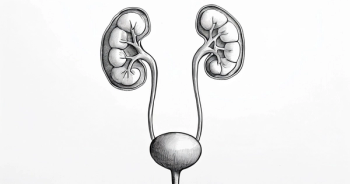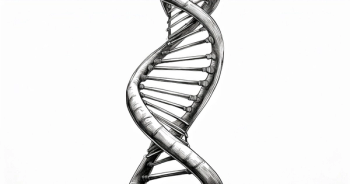
Targeted Therapies in Oncology
- August 1 2020
- Volume 9
- Issue 1
Investigators Characterize Cancer Risk in Men With BRCA1/2 Pathogenic Variants
Men who are carriers of a BRCA2 pathogenic variant were more likely to develop breast, prostate, and pancreatic cancers than patients harboring BRCA1, according to an analysis of male and female carriers of BRCA1/2 pathogenic variants.
Men who are carriers of a BRCA2 pathogenic variant were more likely to develop breast, prostate, and pancreatic cancers than patients harboring BRCA1, according to an analysis of male and female carriers of BRCA1/2 pathogenic variants. These data may represent an unmet need in screening guidelines for this patient population.
Using the Consortium of Investigators of Modifiers of BRCA1/2 as a data source for their analysis, investigators sought to characterize the spectrum of cancers diagnosed in men and identify differences between BRCA1 and BRCA2 carriers. Men included in the study (n = 6902) were older than 18 years and carried a pathogenic or likely pathogenic BRCA1 or BRCA2 variant.
Out of all patients analyzed, 1376 (19.9%) had at least 1 cancer diagnosis, the majority of whom (67.0%) harbored a BRCA2 pathogenic variant. Of all patients with a cancer diagnosis, 1144 (83.1%) had 1 cancer, 206 (15.0%) had 2 cancers, and 26 (1.9%) had 3 independent cancer diagnoses.
A diagnosis of any cancer was more commonly associated with having a BRCA2 variant (OR, 3.23; 95% CI, 2.81-3.70; P < .001), and more likely associated with diagnoses of 2 (OR, 7.97; 95% CI, 5.47-11.60; P < .001) or 3 (OR, 19.60; 95% CI, 4.64-82.89; P < .001) primary tumors. Additionally, this variant was observed in all patients with 2 independent breast cancers.
For the first cancer diagnosis, the majority were breast or prostate cancer and more frequently associated with BRCA2 carriers than BRCA1. Nonbreast and nonprostate cancers combined occurred in 554 patients and accounted for 40.2% of all first cancer diagnoses reported.
After adjusting for age, country of origin, and calendar year of interview, comparing BRCA2 carriers with BRCA1 showed a higher frequency of breast (OR, 5.47; 95% CI, 4.06-7.37; P < .001) and prostate cancers (OR, 1.39; 95% CI, 1.091.78; P = .008) and a lower frequency of other cancer types combined (OR, 0.22; 95% CI, 0.180.28; P < .001). The most common cancers other than breast and prostate were nonmelanoma skin cancer, colorectal cancer, and melanoma; other frequently reported tumors were head and neck, pancreatic, lung, and bladder cancers.
Reference:
Silvestri V, Leslie G, Barnes DR, et al. Characterization of the cancer spectrum in men with germline BRCA1 and BRCA2 pathogenic variants: results from the Consortium of Investigators of Modifiers of BRCA1/2 (CIMBA). JAMA Oncol. Published online July 2, 2020. doi:10.1001/jamaoncol.2020.2134






































